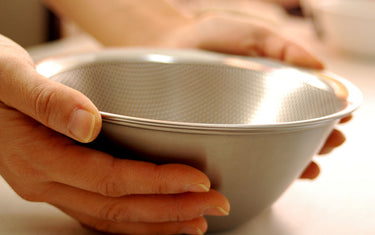There are many types of metal such as steel, copper, aluminum, etc. Among them, stainless steel is used for many purposes thanks to its heat resistant and anti-corrosion features. Do you know there are various types of stainless although it is considered to be a single metal?
Here, we will explain the features of stainless in details.
What is stainless steel?
Stainless steel is an iron-based alloy steel containing 10.5% or more of chromium and 1.2% or less of carbon. In addition to chromium and carbon, various alloying elements such as nickel and molybdenum are added, and the types differ depending on the content of each.
As you can see from its name, it is a metal that does not rust easily, but it does not mean that it does not rust at all.
The main types of stainless steel are the following four types.
- Austenitic stainless steel
- Martensitic stainless steel
- Ferritic stainless steel
- Austenitic-ferritic stainless steel
Austenitic stainless steel
Austenitic stainless steel contains 16% to 20% chromium, 8% or more nickel, and 0.15% or less carbon.
Due to its excellent corrosion resistance, this is used in various applications such as construction, gas tanks, home appliances, electronic power facilities, household goods, and automobile goods.
Martensitic stainless steel
Martensitic stainless steel contains 12% to 18% chromium and 0.1% to 0.40% carbon.
Although this also has excellent corrosion resistance, it is easily rusted influenced by the surrounding rust, so it is used in environments where frequent cleaning is performed.
In addition, since the hardness increases by quenching, it is widely used in applications where hardness is required, such as pumps, shafts, and nozzles.
Ferritic stainless steel
Ferritic stainless steel features containing 16% to 18% chromium, 8% or more nickel, and 0.12% or less carbon.
This hardness is high, but its hardness does not change by quenching.
Due to its slightly inferior corrosion resistance, it is generally used in less harsh environments such as architectural interiors and household items.
This is mainly used in the form of lines and thin plates for kitchen utensils, building interiors, automobile parts, etc.
Austenitic-ferritic stainless steel
Austenitic-ferritic stainless steel, also called duplex stainless steel, is a stainless steel with a mixture of austenitic and ferritic duplex phases.Its properties are just between austenitic and ferritic, and its high strength and excellent corrosion resistance make it suitable for use under severe conditions.
This is used in seawater condensers, heat exchangers, flue gas desulfurization equipment, and chemical plant equipment.
Types, features, and applications of stainless steel
The four types of stainless steel introduced above can be subdivided further.
Various types of stainless steels have various characteristics and are utilized in situations suited to their properties.
Here, we will explain the types, features, and uses of various subdivided stainless steels.
By the way, the number at the beginning of each name indicates the amount of chromium and nickel contained in each stainless steel.
Chromium is extremely hard and has excellent corrosion resistance, wear resistance, heat resistance, and mold release properties. The higher the chromium content, the harder and more stable the property becomes.
Nickel is characterized by its tenacity in hardness and high corrosion resistance. The higher the nickel content, the higher the corrosion resistance.
18-12 stainless steel
This is one of the types of austenitic stainless steel.
This has excellent corrosion resistance, heat resistance, and impact resistance, and can be used in harsh marine environments.
This is used for high quality cutlery, etc.
18-10 stainless steel
A type of austenitic stainless steel.
This is slightly inferior in corrosion resistance to 18-12 stainless steel, but is as stable as any other. This is also widely used for cutlery, etc.
18-8 stainless steel
A type of austenitic stainless steel.
This is the most commonly used stainless steel, and is widely used in architectural, interior, and furniture parts such as bolts, narutos, and washers.
18-0 stainless steel
A type of ferritic stainless steel.
This is not highly corroded, but it has high heat resistance, impact resistance, and low thermal conductivity, so it is mainly used for building interiors, home appliances, oil burners and furnace radiators of below 850 °C, etc.
13-0 stainless steel
A type of martensitic stainless steel.
This is inferior in corrosion resistance to other stainless steels. But its hardness can be increased by quenching, so it is used for applications such as drill screws and tapping screws that are heavily worn and worn.
21-0 stainless steel
This is a stainless steel with 21% added chromium and no nickel.
This has extremely good corrosion resistance, but is characterized by high thermal conductivity and magnetism. It is widely used in kitchen utensils such as cooking utensils.
Summary
We explained the features and applications of various stainless steels.
After you can understand what kind of properties each product has from the content of chromium and nickel indicated on the stainless steel product, you will be able to make a choice of the materials well according to the usage scene.
By choosing the material that suits your needs and using the properties of the metal properly, the quality of your work and life will be surely improved.













